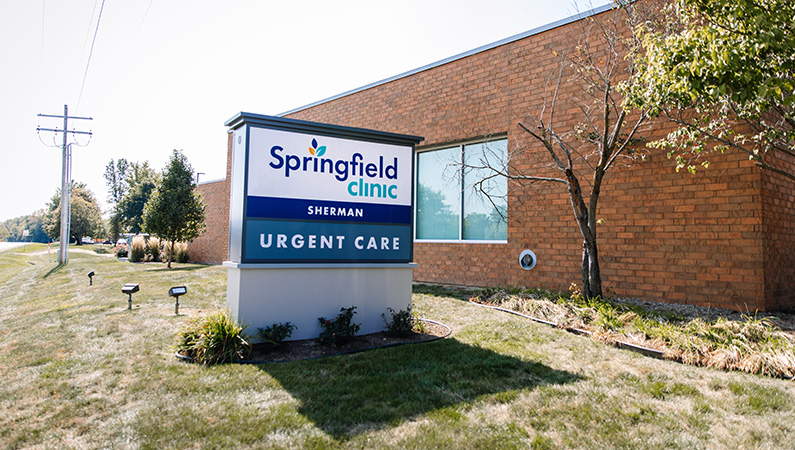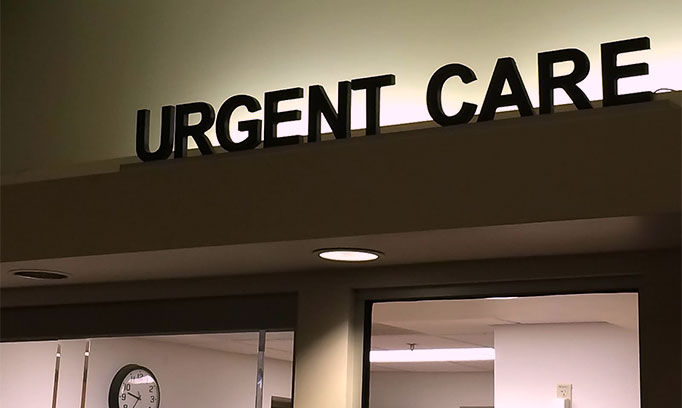What to Expect at a Leading Clinic Offering Urgent Care Services
What to Expect at a Leading Clinic Offering Urgent Care Services
Blog Article
Understanding the Role of Urgent Care in Providing Timely Therapy for Non-Life-Threatening Conditions
Urgent treatment centers have actually emerged as a vital element of the medical care landscape, dealing with the prompt requirements of patients with non-life-threatening conditions. Recognizing the nuances of immediate care can considerably influence client end results and the general efficiency of medical care delivery.
What Is Urgent Care?
Immediate care describes a category of medical solutions designed to attend to non-life-threatening problems that require immediate focus. These centers work as an intermediary in between medical care doctors and emergency situation rooms, using a hassle-free option for people who require punctual treatment without the comprehensive waiting times typically associated with emergency situation divisions.
Immediate treatment centers are usually staffed by physician, consisting of medical professionals, registered nurse practitioners, and doctor aides, who are trained to diagnose and treat a broad variety of conditions. Usual solutions given by these facilities consist of therapy for small injuries, illnesses, and infections, as well as diagnostic tests such as X-rays and laboratory work.
The access of immediate treatment is an essential element in its appeal, as many facilities operate beyond normal office hours, including weekend breaks and evenings. When their primary care service provider might not be obtainable, this prolonged availability permits individuals to get prompt treatment. Additionally, immediate care facilities commonly accept walk-in people, getting rid of the need for consultations. Generally, immediate care plays a vital function in the healthcare system, making sure individuals can access vital clinical services without delay and effectively.

Several people may locate themselves unsure regarding when to seek treatment at an urgent treatment facility as opposed to a medical care physician or an emergency situation room. Urgent treatment is created to address non-life-threatening problems that require punctual attention but are not extreme adequate to call for an emergency clinic visit.
Normally, one should think about immediate take care of issues such as minor fractures, strains, cuts calling for stitches, or infections like urinary tract infections. Additionally, cool or flu symptoms, breakouts, and allergies can likewise be suitably managed in this setup.
It is very important to note that immediate treatment is not suitable for serious emergencies, such as upper body discomfort, trouble breathing, or severe bleeding, which require prompt emergency room intervention.
People that lack access to a health care doctor or can not safeguard a prompt appointment may also benefit from urgent treatment solutions. Inevitably, recognizing when to utilize urgent care can result in a lot more effective medical care distribution, permitting people to receive the appropriate level of care based on their specific health requirements.
Benefits of Urgent Care Centers
Selecting urgent care facilities for non-life-threatening problems supplies numerous benefits that enhance patient experience and availability. One main advantage is the lowered delay times contrasted to typical emergency clinic. Immediate treatment centers commonly operate a first-come, first-served basis, permitting patients to obtain prompt clinical focus without the lengthy hold-ups commonly linked with medical facility settings.
Additionally, urgent treatment facilities give extensive hours, including weekends and nights, fitting clients with differing schedules. This flexibility ensures that people can look for care when it is most hassle-free for them, additionally promoting prompt intervention.

Furthermore, these facilities often provide a detailed series of services, consisting of analysis tests and minor treatments, all under one roofing system. This combination of services not just enhances the individual experience however also fosters an extra natural method to managing non-life-threatening wellness problems, ultimately profiting general patient end results.
Typical Conditions Dealt With
At urgent treatment centers, a selection of non-life-threatening conditions can be effectively dealt with, offering here patients with timely and easily accessible medical aid. These facilities are particularly skilled at dealing with issues that call for timely attention yet do not position a prompt risk to life or arm or leg.
Common conditions dealt with at immediate treatment facilities consist of small injuries such as cracks, pressures, and strains. Immediate treatment centers are furnished to do needed diagnostic tests, such as X-rays and laboratory examinations, allowing them to give thorough treatment.
Moreover, urgent care suppliers can provide inoculations, helping to avoid the spread of infectious conditions - Urgent Care. They likewise provide services for small procedures, such as suturing wounds or draining pipes abscesses. By supplying these varied services, immediate treatment centers play an important role in linking the space between medical care and emergency solutions, more helpful hints making sure clients receive prompt treatment for a vast array of conditions without the need for long haul times generally related to emergency situation spaces
How Urgent Treatment Supports Healthcare System
Urgent care centers play an important role in supporting the total healthcare system by reducing the worry on emergency divisions and offering prompt access to clinical care for non-life-threatening problems. By handling situations such as small injuries, infections, and health problems, immediate care centers allow emergency situation departments to focus on even more critical individuals requiring prompt attention.
In addition, urgent care facilities boost healthcare availability, offering extensive hours and an extra convenient option to standard primary care settings. This ease of access is specifically beneficial for patients who might not have a normal medical professional or who need immediate treatment outside of common workplace hours. Consequently, immediate treatment centers successfully lower wait times and improve client fulfillment.
In addition, immediate treatment centers contribute to cost savings for both patients and the healthcare system by offering lower-cost services compared to emergency situation divisions. This economic effectiveness is crucial in an era of increasing health anchor care costs, allowing patients to receive necessary treatment without sustaining exorbitant expenses.
Conclusion
In conclusion, urgent treatment facilities play a crucial function in the health care system by providing prompt therapy for non-life-threatening conditions. By bridging the gap in between main care and emergency areas, these centers make certain that people get timely medical focus without the prolonged wait times generally related to emergency divisions. The availability and efficiency of immediate treatment centers add dramatically to minimizing the overall burden on medical care resources, enhancing individual results, and promoting a more reliable health care delivery system.
Immediate care facilities have emerged as an essential element of the healthcare landscape, attending to the immediate demands of clients with non-life-threatening problems. Urgent care brows through normally sustain lower out-of-pocket expenses contrasted to emergency division gos to, making care a lot more budget friendly for clients without endangering quality. Immediate treatment centers are furnished to perform needed analysis tests, such as X-rays and lab examinations, enabling them to offer extensive treatment.
By offering these diverse solutions, immediate care centers play a crucial function in bridging the space in between primary care and emergency solutions, making certain clients receive timely treatment for a large array of problems without the need for long wait times normally linked with emergency situation rooms.
Furthermore, immediate treatment facilities boost medical care accessibility, using extended hours and an extra practical option to standard key treatment settings.
Report this page